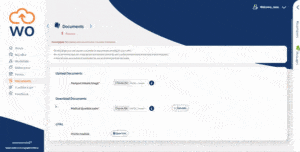To help provide emergency volunteers for the COVID-19 outbreak, the UK Government has made some changes to employment guidelines.
These changes, set out in the Coronavirus Act 2020, are designed to help organisations handle the unprecedented challenges posed by the pandemic.
Here’s a look at what’s changing and how it impacts onboarding:
What are the new rules for emergency volunteers?
The Emergency Volunteering Leave Scheme (EVLS) gives workers the right to temporary leave so they can perform emergency volunteer services. This is set out in Schedule 7 of the Coronavirus Act 2020.
The measures are designed to help organisations, involved in areas such as health-care, food distribution and medical supply manufacture, to quickly ramp up their operations.
No less than three working days’ notice must be given to the employer with the person required to provide a document that confirms they are an approved volunteer.
The volunteering periods are for either two, three or four consecutive weeks. The main exception is for employers with fewer than ten employees.
How are DBS checks changing?
To help organisations handle the rapid influx of volunteers, amendments have been made to Disclosure and Barring Service (DBS) checks. Formerly known as CRB checks, these allow employers to prevent unsuitable people from working with vulnerable groups.
Normal, DBS guidance is for employers to physically check any identity documents that are provided by a prospective worker, such as a passport or driver’s licence.
With many organisations now operating remotely, the guidance has changed for a temporary period to allow documents to be:
- Viewed via a video link
- Submitted as a scanned digital image
The change is intended only for situations where normal checks are not viable. The applicant must also present the original versions of these documents when they first attend their volunteering role.
The documents required depends on the level of DBS check that’s being carried out. You can find full guidelines here: [DBS Identity Checking Guidelines]
How do you rapidly onboard volunteer workers?
Technology provides hiring teams with the tools needed to process large numbers of volunteer workers. In the same way that DBS checks can be handled digitally, so can the entire onboarding process.
Digital management software removes the need for any paper documents to be printed or posted. Applicants are able to instantly receive all of the information they require via an online portal.
Workflows can be created to ensure that DBS documents are submitted or that a video link is scheduled to allow an applicant to display their ID document. Automated alerts and notifications help to make sure that tasks get done.
It provides a fast and scalable way to manage the unprecedented hiring demands that many organisations are now facing. It allows a remote working HR team to keep track of the entire process without lowering checking or vetting standards.




